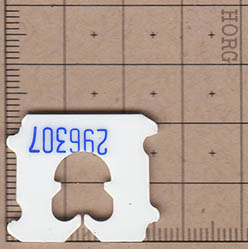Palpatophora magnastoma
- Kingdom
- Microsynthera
- Phylum
- Plasticae
- Class
- Occlupanida
- Order
- Orthogonidectes
- Family
- Toxodentidae
- Genus
- Palpatophora
- Species
- magnastoma
- External morphology
Lateral palps. Size 21.5 mm x 26 mm
At first glance P. magnastoma could be one of a few very common occlupanid species: P. glyphodorsalis, P. utiliformis, or P. utiliformis grandis. Closer examination shines a light on P. magnastoma’s stand out feature. Its rather large oral groove is equal in size to that of Porrectofrontus mechadeus and only smaller than that of Aspericardis lehmeri among other Toxodentidae. P. magnastoma has been observed in biomes similar to those P. mechadeus is found in, namely plastic bags containing large and/or heavy produce. Perhaps its smaller external morphology makes it safer from predation. The bags it has been seen attached to are often a mix of plastic mesh and plastic sheet. It is unclear whether P. magnastoma requires this mixed biome to remain healthy. They are commonly white but pale blue specimens have been located, and a pale yellow specimen was observed in Turkey, a rare sighting for the region. Discovered by field researcher C. Reeves, and described by occlupanologist C. Huning of DWORC.
